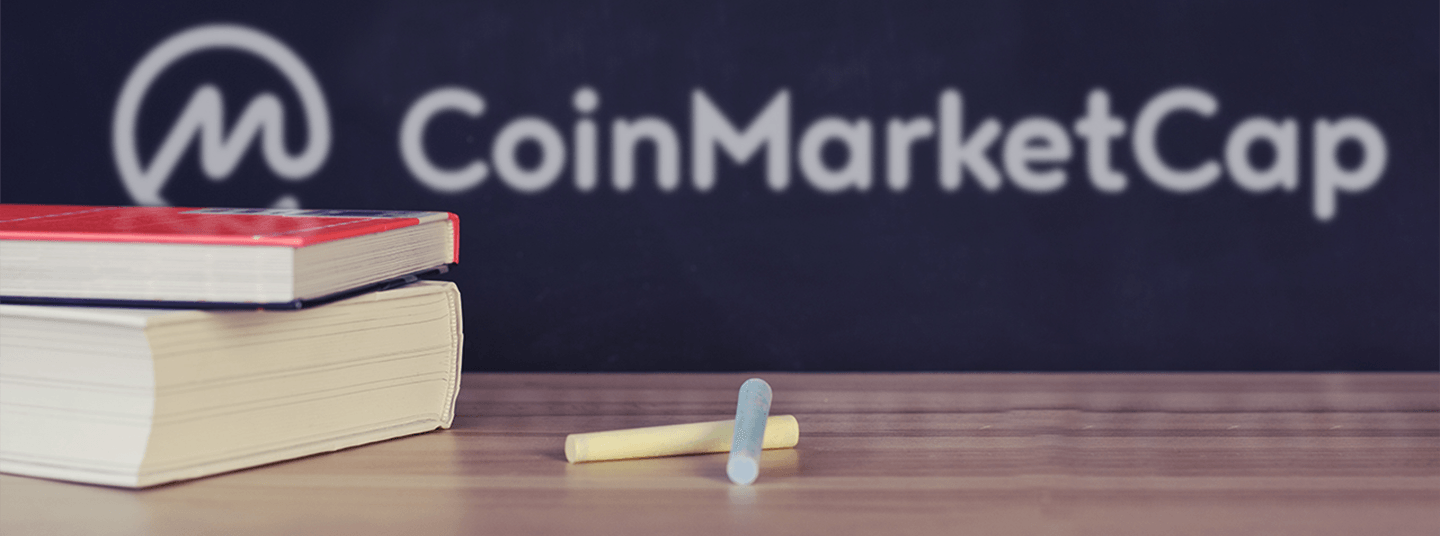
How to Use CoinMarketCap: 17 Must-Know Tips [2023 Tutorial]
If you’ve been involved in the cryptocurrency space for more than 2 hours, then I’m sure you’ve landed on CoinMarketCap at least once.
But in case you haven’t, I will introduce it simply to you.
CoinMarketCap:
- Provides useful information, statistics, and charts
- Has data on thousands of cryptocurrencies
- Is known to have the most accurate information
- Ranked in the top 1,000 largest websites in the world in 2018 according to Similarweb
You get my point: CoinMarketCap is a monster.
But most cryptocurrency investors don’t know how to use CoinMarketCap to its full potential in 2023, and only scratch the surface of what CMC can offer.
That’s what this CoinMarketCap tutorial will be about: covering all of the features that CMC has to offer -- from the most basic features to the more hidden ones, and discuss how you can take advantage of each feature to make smarter investment decisions.
1. Global Market Metrics
Understanding how to read global market metrics is the first step in learning how to use CoinMarketCap.
Upon landing on CoinMarketCap.com, you will see some global metrics towards the top of the homepage. Seeing these metrics at a glance is super convenient to gain a rough vibe for the status of the market.

These metrics include:
- The total number of cryptocurrencies listed on CMC
- The total number of markets (and their rankings if you click on them)
- Global market capof the entire cryptocurrency industry. This statistic helps to keep track of how much money is flowing in or out of the ecosystem. And if you click on this statistic, you will see graphical views of the data.
Market Cap
The total value of a cryptocurrency. Calculated by multiplying a coin’s price by its total supply. - Total 24-hour volumetransacted across all exchanges for all the cryptocurrencies listed.
Trade Volume
A measure of how frequently and how heavily a cryptocurrency is bought and/or sold during a given time period. - Bitcoin dominance - calculated as (Bitcoin’s market cap / Total market cap). If Bitcoin’s dominance decreases, it means other cryptocurrencies have been gaining an increasing amount of attention from investors, compared to Bitcoin. At the time of this writing, Bitcoin represents 50% of the market.
2. Accurate Coin metrics
If you click on a coin, you will be taken to that individual coin’s dashboard where you can view some of its basic metrics, including:
- Market capitalization
Market Cap
The total value of a cryptocurrency. Calculated by multiplying a coin’s price by its total supply. - Trading volume
Trade Volume
A measure of how frequently and how heavily a cryptocurrency is bought and/or sold during a given time period. - Price (in US dollars, BTC and sometimes ETH)
- Circulating, Total
Circulation
Free movement of coins between individuals.and Maximum supplies when availableTotal Coin Supply
A measure that describes how many coins of a given cryptocurrency can exist (after all mining is completed, if applicable). - Chart data

CoinMarketCap has reliable integrations with exchanges and coins, bringing in consistent and accurate data. I’ve grown to trust their architecture over the many years being in the industry.
This may seem silly, but trust me when I say that not everyone can pull in normalized, accurate data from hundreds of exchanges and for thousands of coins.
- Market capitalization
3. Research Any Currency You Want
Yes, not every coin in the world is listed on CoinMarketCap, but thousands are.
And you can search any of them by typing the coin’s name or ticker (i.e. BTC for Bitcoin) in the search bar in the upper right.

Having the ability to research thousands of coins from one place saves a ton of headache.
Tip: You can also search for exchanges
using the search bar!Exchange
Online platforms on which individuals can buy and sell cryptocurrencies.4. Exhaustive Graph Data
Graph data is particularly useful. Not only does if give you a visual view of the data, but it also lets you get as granular as you want when analyzing current and historical pricing data.
To find the graph data, scroll down a little once you land on a coin’s dashboard - you can’t miss it.

When using their graphing functionality, you can:
- Change the date. You can select a time period (1y, 3m, 1m, 7d, 1d) to view historically, or manually adjust a time-frame
- View prices in USD, BTC, and ETH (depending on the coin)
- Include/exclude the market capand the 24-hour volume
Market Cap
The total value of a cryptocurrency. Calculated by multiplying a coin’s price by its total supply. - View linear or log graphs. The linear view is easier to read - better if you’re just starting, but the log graph can give you a more accurate overview.
5. Useful Links for Each Coin
When you click on a coin and enter its dashboard, you can find a lot of useful links, such as:
- The official website
- The best blockchain explorersavailable
Block Explorer
Websites (available for most cryptocurrencies) that allow users to search an address or transaction ID to view its details. - Whitepapers
White Paper
A technical document that outlines a project’s features, technology, and vision. - Communities (i.e. forums, Telegram/Discord groups, etc.)
- Technical documentation
- Whether it’s a coin or a token
- Whether it’s mineableor not
Mining
The process by which new coins are created as transactions on a network are verified.

The links provided on CoinMarketCap are particularly trustworthy. Check out point #9 of this CoinMarketCap tutorial to find out the importance of this.
6. Best Exchanges By Volume
Liquidity
is the name of the game in crypto. The more liquid an exchangeLiquidity
The measure of how quickly an asset can be exchanged for usable currency., the easier it is to buy or sell a coin at a consistent price.Exchange
Online platforms on which individuals can buy and sell cryptocurrencies.You can view the top 100 exchanges by volume (check the adjusted volume for more accurate information) and more.
To reach this page by yourself, select the “exchanges” tab, next to “cryptocurrencies,” on the homepage.

7. Exchange Information
After searching through different exchanges, you can click on one for deeper insights. You’ll be taken to the exchange’s dashboard, where you’ll find useful links such as:
- The official website
- Support
- Social media pages

You’ll also be able to view all of the possible trading pairs listed on the exchange, from one place!
8. Find Out Where to Buy Any Cryptocurrency
Just learned about a new coin, but don’t know where to buy it?
Once again, CoinMarketCap can help you. This is an under-used feature that I want to emphasize in this CoinMarketCap tutorial.

To find all the exchanges to buy a given coin, simply:
- Search for the coin
- Click on the market tab, and you’ll see all exchanges and trading pairs
- Check prices and select the most interesting one for you.
So many times, I see people entering Telegram and Discord groups (known to have many deceptive scammers) asking where to buy a coin when they can easily find out on CoinMarketCap.
Note: Always check the reputation of the exchange before proceeding.
Are you Struggling to Buy Cryptocurrencies? Paying High Fees? Find Out the Best Way to Buy Bitcoin!9. Never Get Misled Again
The crypto world is full of phishing scams
and fake websites, wallets, or exchanges that are easily mistaken for the real ones.Scam
A fraudulent endeavor. In the cryptocurrency world, this often refers to the practice of fooling investors in some way.Imagine thinking you are registering on a real exchange, but instead, it is fake. Well, you just gave your credentials to a hacker, and your funds will most likely be stolen if you transfer crypto to the exchange.
To avoid this, here is one of the most precious tips I will provide in this CoinMarketCap tutorial:Find sensitive links via CoinMarketCap as often as possible - that includes coins’ and exchanges’ official websites.
CoinMarketCap has never been hacked or exposed users to fake links, so I’ve gained to trust them as the most reliable source of links to information.
10. Create Your Own Watchlist
On CoinMarketCap, you can create your watchlist without even making an account!
A watchlist lets you list coins that are of particular interest to you, so that you can keep an eye on their progression. This way, when you visit CoinMarketCap, instead of being overwhelmed by a list of 1,000+ coins, you can go to your watchlist and track the coins that matter to you.

To add a coin to your watchlist, visit the coin’s dashboard and click on the star that says “watch” under the main pricing information. You can also do it directly from the coin’s list by clicking on the “...” icon beside each coin.

Once you have added a few coins, you can navigate back to the watchlist tab without having to log in.
11. Gainers and Losers
CoinMarketCap allows you to view the biggest gainers and losers in the market in terms of price action.
For example, if you see a coin you never heard of towards the top of the list, with significant volume
, it may be a gem worth exploring!Trade Volume
A measure of how frequently and how heavily a cryptocurrency is bought and/or sold during a given time period.
I don’t recommend buying a coin at the top, as this is a mistake more often than not. But if it’s only the first leg up, then it may be good to keep an eye on it.
Own Crypto but Struggle to Overperform the Market? I Bet You’re Making Big Mistakes!12. Convert Any Cryptocurrency’s Price For Another One
This is a fun one. CoinMarketCap offers a conversion tool which allows you to see how much you own of one asset, in terms of some other asset, whether it’s fiat or cryptocurrency.

13. Find Upcoming Events around Blockchain and Cryptocurrencies
Want to attend local events in your area? CoinMarketCap has an impressive list of upcoming cryptocurrency events and conferences.

I have personally gone to local events in my area, and they are excellent for networking and learning. I meet people daily online, but forming relationships in person at these events is best above all else.
14. Historical Data
If you want to really know how to use CoinMarketCap for all it has to offer, then starting thinking about historical data. You can use historical data to backtest trading strategies or view historical trends in a clean way.
Historical data is usually difficult to find, and some people pay hundreds or thousands of dollars to get their hands on reliable historical data.
Fortunately, CoinMarketCap has an excellent way to view historical data. While it’s not as granular as tick data, you can view daily prices, volume
, and market capTrade Volume
A measure of how frequently and how heavily a cryptocurrency is bought and/or sold during a given time period.for a given coin going back to inception. Their historical data view is an excellent alternative to a graphical view.Market Cap
The total value of a cryptocurrency. Calculated by multiplying a coin’s price by its total supply.
To access a coin’s historical data, go to the coin’s dashboard, and select the “Historical Data” tab to the right.
15. Historical Snapshots
This feature is super cool. It allows you to have an overview of how the cryptocurrency market looked at a specific date of the past.
You can select say, September 18, 2016, and see what all of the coins’ prices and market caps were back then. Sometimes, it will make your stomach drop seeing how far we have come!

To access historical snapshot data, navigate to “Tools” on the top navbar, and then select “Historical Snapshots.” The feature is available for dates starting from April 28, 2013.
16. CoinMarketCap API
I’ll admit it; I’m a geek. I like to backtest trading strategies and to do that, I need historical data. I also like to pull market data into an excel sheet so I can view my portfolio value, and update them often.
To do that, CoinMarketCap offers an excellent API. There is also considerable documentation that explains how to use CoinMarketCap’s API so you can begin pulling in data. All for free.
They also have a premium plan which allows for extremely granular tick data. The API is one of the most sophisticated tools mentioned in this CoinMarketCap tutorial, but if you don’t mind getting a bit technical, it can prove to be very useful.
To get to the API page by yourself, scroll down the page until the bottom and find the link in the footer.

17. Informative Blog
Yep, CoinMarketCap has a blog! You can access it by clicking on “blog” towards the top of their homepage.

Their blog is split up into different sections such as analysis, interviews, education, product announcements, and more.
Extra Features?
CoinMarketCap STILL has many more functionalities. Their offering seems virtually endless. But, no one can be the best at everything.
They also offer:
- A glossary. But compare it with our glossary, I bet you’ll see quite a difference.
- An ‘Intro to Crypto.’ But since cryptocurrency education is our thing, I’m sure you’ll agree you don’t need CoinMarketCap to educate yourself!
CoinMarketCap Alternatives
If you still feel CoinMarketCap is not enough for you and you deserve more (I’m sure you do!), here are two alternatives that I highly recommend checking out.
OnchainFX
OnChainFX, now a Messari brand, is an excellent CoinMarketCap alternative. With OnChainFX you can still search through nearly all the coins you desire, while also being exposed to unique statistics such as:
- A coin’s age
- Yearly ROI for a given year
- The expected supply of a coin in the year 2050
- Specialized indexes (generally of the top 10 largest crypto assets)
- Even coins labeled as “memes” such as Dogecoin!
- And more.
OnChainFX is run by Ryan Selkis, formerly a lead at CoinDesk and Digital Currency Group.

Coincheckup
Coincheckup is an interesting CoinMarketCap alternative. They show the typical statistics you would expect, in addition to fundamental analysis
and other rankings based on their own built algorithms.Fundamental Analysis
The analysis of the economic and political factors that affect the intrinsic value of an asset
You can check them out under the “analysis” tab at the top of their homepage. They also provide ICO
information for existing and upcoming coin offerings.ICO
Initial Coin Offering. An event in which a cryptocurrency project “goes public,” selling early coins in exchange for funds.Want to Discover More Awesome Crypto Tools? Check Out the Ultimate List of Tools You Must Use to Make Smarter Decisions!Well, that wraps up our CoinMarketCap Tutorial. If you took your time going through this guide, then congratulations! You now know how to use CoinMarketCap as an expert. So let me personally welcome you to the CoinMarketCap Pro Club ;-)
- Own a website? Link to this article!
- Willing to spread the love? Share it on social!












































